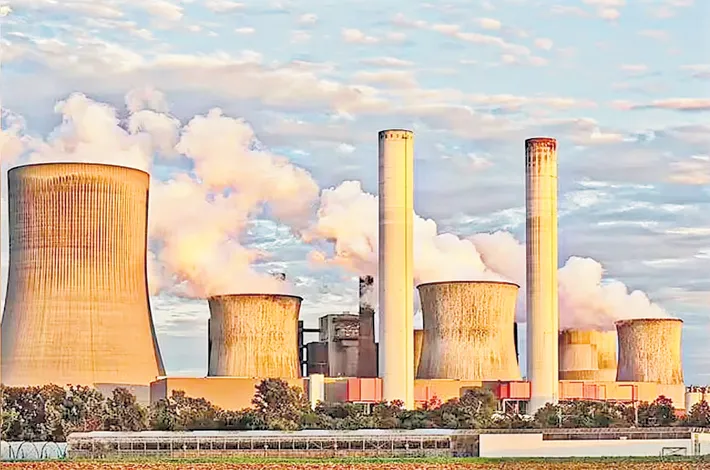Telangana approves thermal plans
27-11-2025 12:00:00 AM

metro india news I hyderabad
Telangana’s recent cabinet decisions on thermal power have sparked widespread debate among political analysts, environmentalists, and energy experts. While the state is gradually reducing the Plant Load Factor (PLF) of existing thermal plants, the cabinet has simultaneously approved the construction of a new 800 MW thermal power plant in Ramagundam and is exploring opportunities for additional plants in Palvancha and Maktal. The move has raised concerns over environmental impact, ash disposal, and the logic of building new coal-based plants when renewable energy capacity is available.
The state’s energy planners had presented a detailed PowerPoint in the cabinet, highlighting projected electricity demand for the next decade. Despite the declining PLF in existing plants and the environmental burden of accumulated ash, the decision to proceed with new thermal plants has surprised many experts. Already, the state has around 10 million metric tons of ash stockpiled from operational thermal plants, posing a significant ecological challenge.
At the national level, renewable energy is being prioritized over thermal power. The central government has issued guidelines encouraging solar, wind, and hydroelectric energy, gradually reducing reliance on coal-based generation.
In line with this, Telangana’s cabinet approved tenders for 3,000 MW of solar power and 2,000 MW of pumped storage projects, while also allocating land and water resources for potential 10,000 MW pumped storage plants. The produced electricity from these renewable sources will first be supplied to state distribution companies. Additionally, new industries in the state will be permitted to produce their own captive renewable energy to meet operational needs.
Despite these green energy initiatives, the proposal to construct thermal plants in areas without coal, such as Maktal, has provoked criticism. Observers question the rationale behind awarding projects to companies under NTPC or GENCO based on lower tariffs when the state is already reducing thermal generation. The PLF of thermal plants in Telangana has been steadily declining: from 79.64% in 2023 (28,280.07 million units) to 65.01% in 2024 (24,053.97 million units), and to just 56.03% in 2025 (as of November 13) with total capacity of 5,580 MW under TSGENCO.
Meanwhile, additional thermal capacity is coming online. At Yadadri, three new units totaling 2,400 MW are expected next year, and Singareni has started work on a third 800 MW unit at Jaipur Mandal. Thermal power production continues to coexist with renewable energy expansion, creating a complex energy scenario in the state.
To address intermittency in solar power, the state has initiated Battery Energy Storage Systems (BESS). A 750 MW system has been put out for global tenders under TSGENCO, and Singareni recently commissioned its first 1 MW BESS unit at Mandamarri, which is set to be operational within days. Similar storage projects are planned across Singareni units, ensuring renewable electricity is available even when the sun isn’t shining.
Telangana’s energy landscape now presents a paradox. While solar, wind, hydro, and pumped storage projects are being actively promoted, cabinet approval for additional thermal plants—despite environmental risks and declining PLF—has raised questions over the state government’s energy strategy. Stakeholders are left wondering whether these mixed signals indicate forward momentum or regression in Telangana’s power planning.








